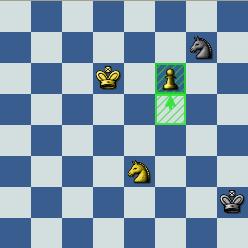March 5, 2010
Following the trodden path
Posted by rollingpawns under chess, chess openings | Tags: French Tarrasch 3...c5 4. exd5 Qxd5, N vs. N |[7] Comments
October 2, 2009
I’ll take the point
Posted by rollingpawns under chess | Tags: knight ending, N vs. N, Ruy Lopez Classical variation |[15] Comments
I played yesterday in my new club, G/90. I am not satisfied with my play. I think I wasn’t fully concentrated, also my chronic under-calculating and maybe I played too fast, I had ~25 minutes left when it finished on 52nd move (my opponent actually had more) . Anyway, the result was good – I won. It was another +100 rated guy, it’s like I am playing in U2000 tournament. I was White and it was Ruy Lopez, Classical variation, 3. … Bc5. I never played OTB against this variation , had a few correspondence games that I don’t remember. It showed, as I missed winning a piece at the very early stage and got under some pressure later. At one moment I made a wrong move allowing my opponent combination winning an exchange, but he missed it. Then we got a position where I deliberately allowed his rook on the 1st line (following queens exchange) to relieve the pressure on “d” line. It actually brought me even bigger dividends, as we exchanged both rooks and went into the knight endgame where I clearly had better perspectives. I played pretty well this part, got “a” and “b” passed pawns. Then I made a stupid mistake losing a pawn, which again he didn’t notice. The pawns eventually decided the game, sacrificing themselves but distracting Black’s knight and king. I posted the game, raw pgn, you can consider it as a tactics exercise, try to find missing stuff. I will post Fritz’s annotations later, Fritz had his day on this one :). OK, here is what Fritz says about the game. I could win a piece with 6. d4 and 22. … Nd4 was winning exchange. 46. a5 was losing a pawn due to 46. … Nxa5.
“The winner is the player who makes the last but one mistake” – Savielly Tartakower
July 17, 2009
Knight endings
Posted by rollingpawns under chess endgames | Tags: knight ending, N vs. N, N vs. pawns |[13] Comments
I recently had a blitz game where having a knight + pawns vs. pawns I drew in the time trouble. The dissapointing result attracted my attention to knight endings.
I found a section about that in the book “Theory and practice of the chess endings” by A.N. Panchenko, great book with very easy explanations.
Here I want to show a few examples from this book and from the game Alexander Grishuk vs. Judit Polgar.
One of the principles – knight is a very bad fighter against rook pawn. The reason is that knight controls essentually less squares being on the rim. In the case of K+N+RP vs. K+N the weaker side can’t survive without help of the king.
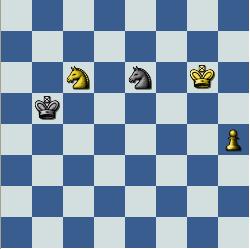
1. Nd4+ – fork, very typical for knight endings. 1. …Nxd4 2. Kf6 – deflection!
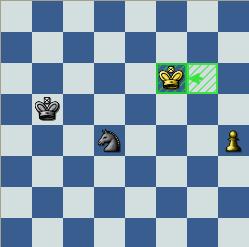
2. … Nc2 3. h5 Ne3 4. Kg5 – deflection again!

Nc4 5. h6
Another principle – quickness of the knight. It helps to survive in the following, looking hopeless, position

1. Ne6 g4 2. Ng7 f4 3. Nh5
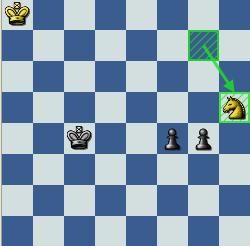
3. … f3 4. Nf6 g3 5. Ne4 g2

6. Nd2+ Kd3 7. Nxf3
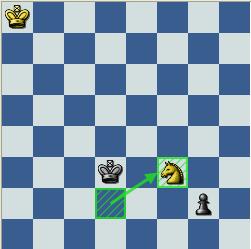
And here is a nice swindle from the game A.Grishuk vs. J.Polgar

1. … Ng4 !!

Now 61. … Nxg4 is stalemate, all other variations lead to draw, see comment here:
http://www.chessgames.com/perl/chessgame?gid=1468281
In the game happened:
2. Nd3 Nh2+ 3. Ke4 Ng4 4. Ne5 Nf6+ 5. Kf3 Ng4 6. Nc4 Nh2+ 7. Ke4 Nf1
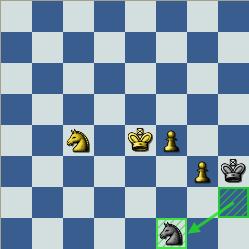
8. Ne3 Nxg3+ 9. Ke5 Kh2 10. Kd6 Nh5 11. f5 Ng7 12. f6 1/2-1/2
